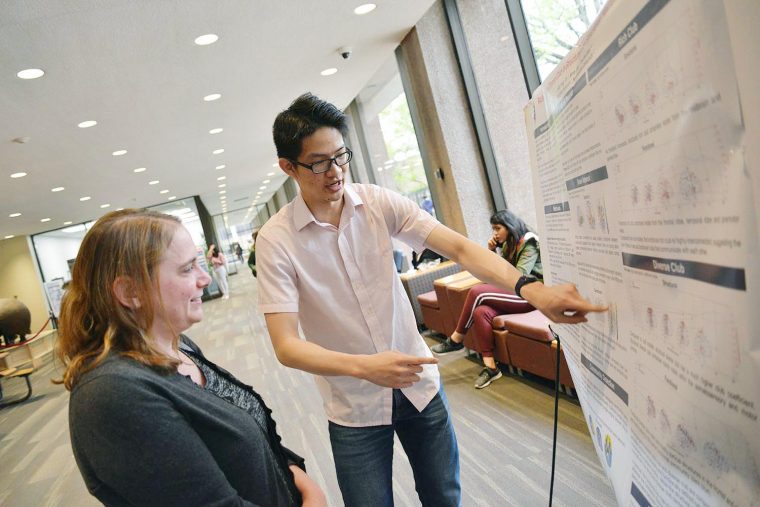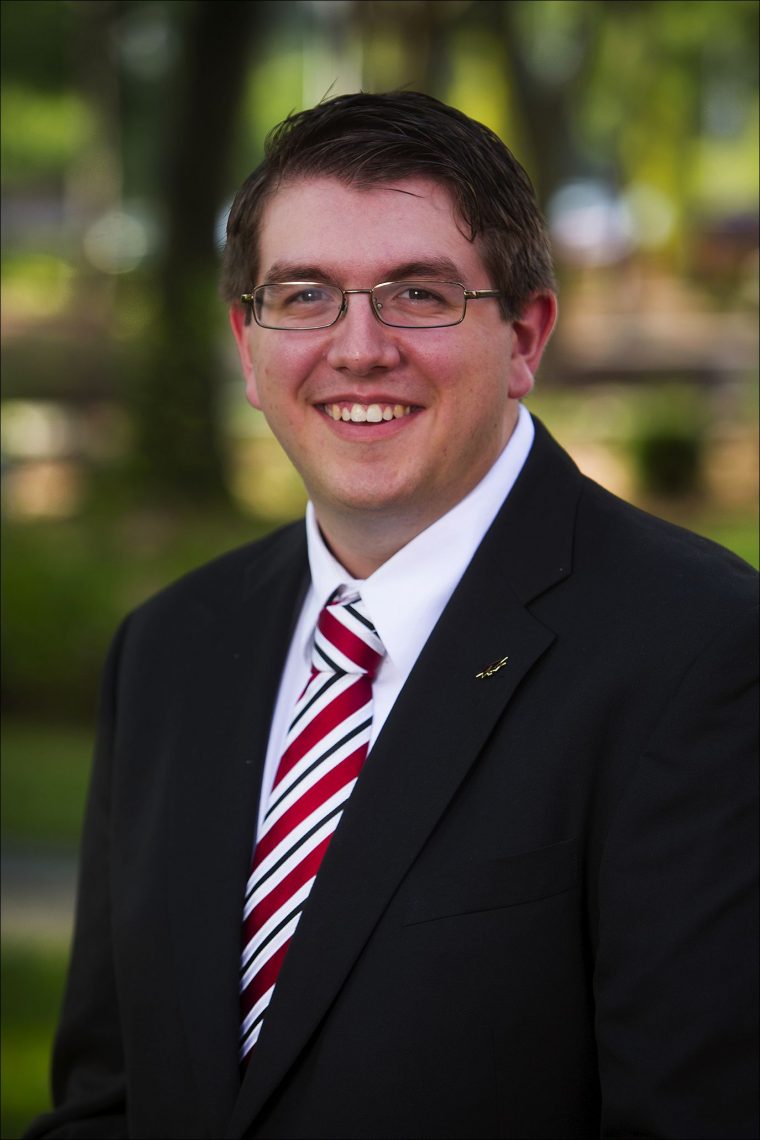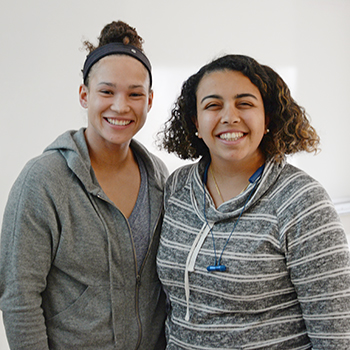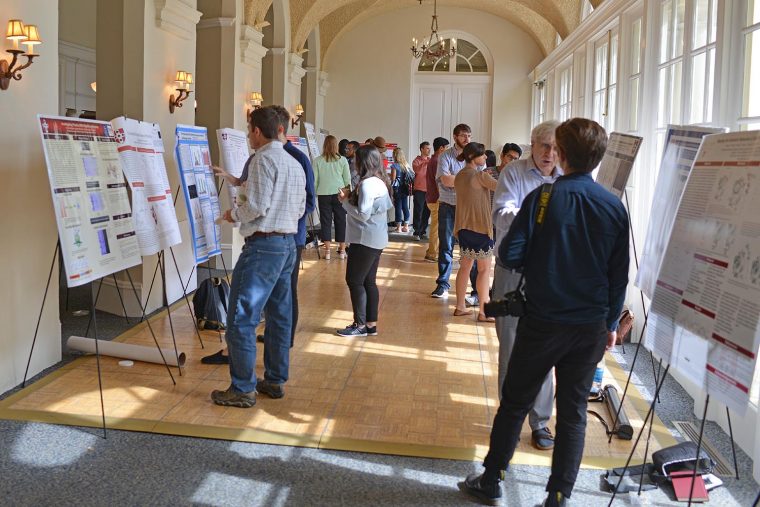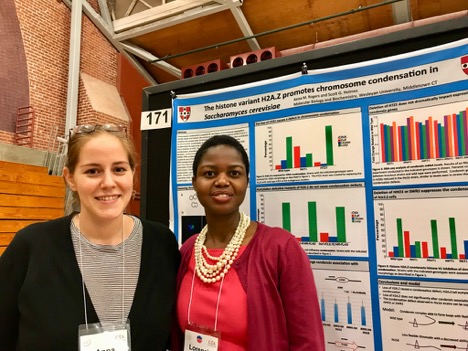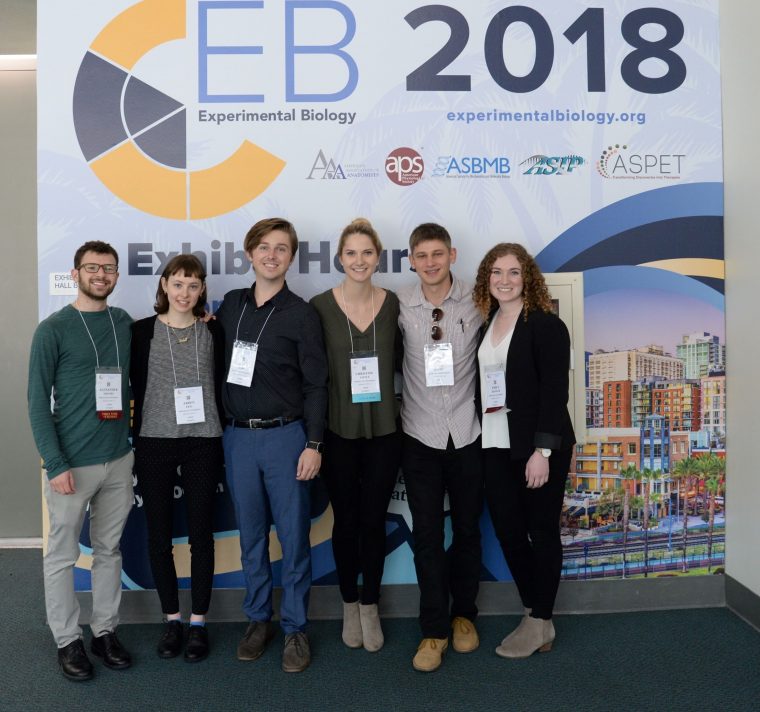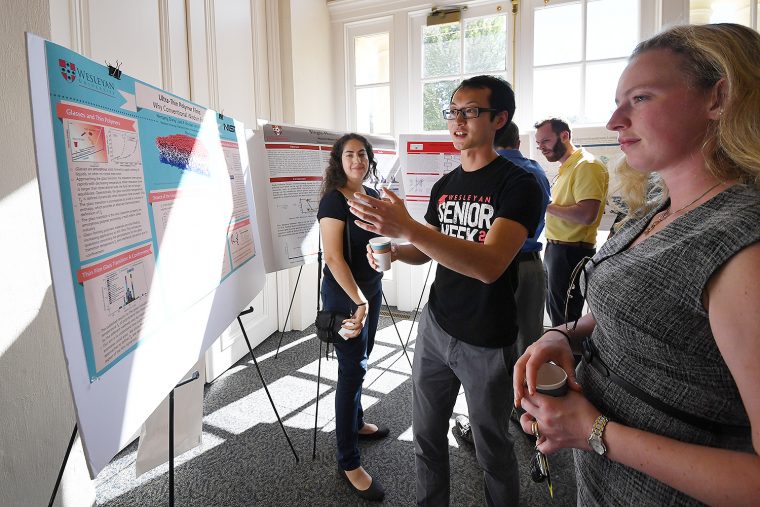Molecular biology and biochemistry graduate student Brandon Case and Professor Manju Hingorani are coauthors of a study published in Nucleic Acids Research in March 2019. The paper, titled “The ATPase mechanism of UvrA2 reveals the distinct roles of proximal and distal ATPase sites in nucleotide excision repair,” reports new findings on how the UvrA2 protein uses its ATPase activity to probe DNA for damage lesions, such as those caused by UV radiation, and initiate nucleotide excision repair (NER). This DNA repair process corrects tens of thousands of lesions introduced daily into the human genome by UV rays and chemical agents. (more…)
Two Wesleyan students were inducted into the 2019 American Society for Biochemistry and Molecular Biology (ASBMB) Honor Society in March. They are among only 33 students from around the country who were eligible to join the society this year. The inductees, Mackenzie Mitchell '20 and Edelina (Lina) Marzouk '19 are both majoring in molecular biology and biochemistry and the Science in Society Program. They are both members of the ASBMB Student Chapters, have a GPA of over 3.4 on a 4.0 scale, and have demonstrated exceptional achievement in academics, undergraduate research, and science outreach. The students were recognized by the Molecular Biology &…
Molecular biology and biochemistry graduate student Brandon Case and Manju Hingorani, professor of molecular biology and biochemistry, are coauthors on a study published in Nucleic Acids Research in October 2018. The paper, titled “Coordinated protein and DNA conformational changes govern mismatch repair initiation by MutS,” reports new findings on how the Mutator S (MutS) protein repairs mistakes in the DNA sequence, which is essential for maintaining the accuracy of the genetic code. The collaborative effort from researchers at Wesleyan, the University of North Carolina at Chapel Hill, and North Carolina State University employed single molecule and ensemble kinetic methods to…
(more…)
Two Wesleyan graduate students and two faculty members presented posters at the GSA Yeast Genetics and Molecular Biology Meeting held at Stanford University on Aug. 22–26. This meeting, which is held once every two years, is organized by the Genetics Society of America (GSA). The meeting brings together hundreds of scientists making groundbreaking discoveries in the field of genetics and gene regulation using the innovative power of yeast genetics. Both students received a travel grant through Wesleyan’s Melnick Fund to support travel to the conference. Lorencia Chigweshe presented a poster titled “Interactions between histone variant H2A.Z and linker histone H1…
Lewis “Lew” Lukens, professor emeritus of molecular biology and biochemistry, passed away on Sept. 8 at the age of 91. Lukens received his BA from Harvard University and his PhD from the University of Pennsylvania. He came to Wesleyan in 1966, first in the Biology Department and then as one of the founding members of the Department of Molecular Biology and Biochemistry, where he remained until his retirement in 1999. Lukens' research involved the regulation of gene expression by eukaryotic cells, specifically the genes for Type I and Type II collagen. He received many research grants from the National Institutes…
Seven Wesleyan students recently were inducted into the American Society for Biochemistry and Molecular Biology (ASBMB) Honor Society, and many of them presented research posters at the ASBMB annual meeting in San Diego, April 21–25. The ASBMB Honor Society recognizes exceptional undergraduate juniors and seniors who are pursuing a degree in the molecular life sciences for their scholarly achievement, research accomplishments, and outreach activities. The Wesleyan students inducted were Will Barr '18, Alexa Strauss '19, Emily Kessler '18, Christine Little '18, Julie McDonald '18, Rubye Peyser '18, and Alexander Shames '18. The following students attended the annual meeting: • Kessler, whose poster was…
Molecular Biology and Biochemistry Professor Manju Hingorani and graduate student Bo Song are coauthors of two studies published in The Journal of Biological Chemistry and Nucleic Acids Research in February 2018. The papers are titled "Positioning the 5'-flap junction in the active site controls the rate of flap endonuclease-1-catalyzed DNA cleavage" and "Missed cleavage opportunities by FEN1 lead to Okazaki fragment maturation via the long-flap pathway." The research is related to Song’s PhD dissertation, which he plans to defend in April 2018. Song examined the mechanism of action of human FEN1, an enzyme that cleaves extra single-stranded segments of DNA before they can…
Associate Professor of Molecular Biology and Biochemistry Rich Olson and members of his lab have uncovered the structural basis for how the bacterial pathogen responsible for cholera targets carbohydrate receptors on host cells—an important finding for the future development of treatment strategies against infectious bacteria. In their paper "Structural basis of mammalian glycan targeting by Vibrio cholerae cytolysin and biofilm proteins," published in the Feb. 12 issue of PLoS Pathogens, Olson and his team—Swastik De PhD '16; graduate students Katherine Kaus and Brandon Case; and Shada Sinclair '16—looked at Vibrio cholerae, an aquatic microbe responsible for cholera, a potentially life-threatening…
Wesleyan's Molecular Biophysics Program hosted its 18th annual retreat Sept. 28 at Wadsworth Mansion in Middletown. Wesleyan affiliated speakers included: Colin Smith, assistant professor of chemistry, on "An Atomistic View of Protein Dynamics and Allostery;" Meng-Ju Renee Sher, assistant professor of physics, on "Tracking Electron Motions Using Terahertz Spectroscopy;" Kelly Knee, PhD '07, principle scientist for Pfizer's Rare Disease Research Unit, on "Protein Folding Chaperones: Molecular Machines for Tricky Problems;" and Francis Starr, professor of physics, director of the College of Integrative Sciences, on "DNA Four-Way Junction Dynamics and Thermodynamics: Lessons from Combining Simulations and Experiments." Arthur Palmer, the Robert…
Three scholars from the Molecular Biology and Biochemistry Department are co-authors of a study published in The Journal of Biological Chemistry in August 2017. The paper is titled "Linchpin DNA-binding residues serve as go/no-go controls in the replication factor C-catalyzed clamp loading mechanism." The co-authors, Manju Hingorani, chair and professor of molecular biology and biochemistry, professor of integrative sciences; Juan Liu, research associate; and Zayan Zhou, PhD '13, performed the study on Replication Factor C (RFC) and proliferating cell nuclear antigen (PCNA), which are two essential proteins required for DNA replication and repair in all living organisms. The researchers found new…


